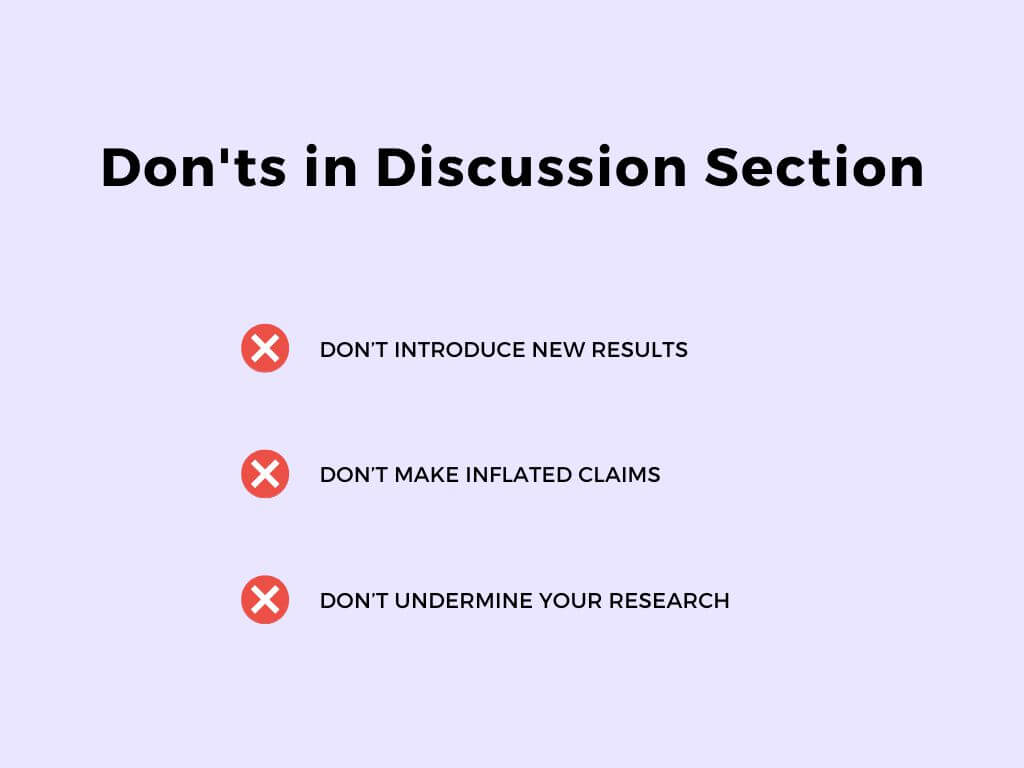Why are students often so concerned about citation styles? The main problem is the wide…
How to Write a Discussion Section
One of the final sections of a research report is the discussion chapter, in which the authors summarize, evaluate, and interpret the results. They discuss the relevance of the findings and relate them to the study topic. Our expert suggestions include a definition of a discussion chapter, what a good discussion section of a research report begins with, helpful instructions for creating one, concluding tips on how to write a discussion section for a research paper, and some common errors to avoid.
What Is The Discussion Chapter Of A Research
This part calls for considering and demonstrating the significance of your study. An excellent discussion chapter makes the reader acquainted with the value of your research. It also gives some information on why your work is worth the reader’s attention.
It is not for nothing that this chapter is considered one of the most difficult parts of the work. The overall purpose of the discussion section is to analyze and convey the relevance of your results in light of what was previously known about the research topic under investigation. Given the importance of academic work for students, the website that writes essay for you could be your life jacket if you experience some difficulties. Our experts will guide you through the complete subject and provide a ready-made qualitative piece of essay, thesis, or dissertation.
Considering this chapter, it’s worth noting that it always examines the results and places them within the context of the broader study. It connects all of the previous sections and lets the reader understand the links between all the parts. The author must convey three processes: interpretation, assessment, and explanation.
An excellent chapter will explain why the key findings are significant and where they can be applied in the published studies, in addition to being self-critical and open about the study’s flaws. The discussion will connect to the introduction through the research questions or hypotheses and reviewed literature. It should never simply repeat or rearrange the introduction.

What To Include In The Discussion Chapter
Some writers often confuse discussion sections and results sections. The results part describes the key results of a study. The discussion chapter differs from the results section of a research paper by interpreting the results for a reader and discussing the results. More on this, you can learn from our experts. The most crucial tip from our team is to remember that the discussion section of a scientific paper is not a repetition of the results part.
Some of the typical problems in composing the results and discussion are as follows:
- charts or numbers that are perplexing
- inconsistency or inaccuracy of data
- possible factors that are not mentioned
- over/under the interpretation of the results
The primary purpose of a discussion section is to present and examine the findings of your investigation. Our recommendations will assist you in creating well-organized future research that meets the essential standards. You must include specific outcomes from your study to start a discussion section. If required, use charts and graphs to display the results. Present all results rationally and concisely so that readers may understand them. In this part, you must also clarify why you obtained such results and why they occurred. Readers should be able to relate the central question of your work to the outcome.
A good discussion section should begin with reining the research inquiry or focus. The following tips also contribute to an excellent discussion section of the paper.
- Connect your quantitative research to your opening, including your key argument, thesis, or issue statement.
- Give a quick summary and an in-depth explanation of the main findings.
- Give readers a critical thinking breakdown of your findings, asking the “so what?” task concerning each of your results. In another sense, acknowledge why these practical implications are significant.
- Explain how your study results may help to fill crucial gaps or solve challenges in your field.
- Compare your findings to those of other studies.
- Consider several interpretations of your findings.
- Allow for multiple interpretations, as your purpose as a researcher is to “find” and “study,” not “prove” or “disprove.”
This chapter should not include new outcomes, unfounded assumptions, or irrelevant limitations. Remember, this should not be a closure. The summary supported by your data is a separate part with its rules and requirements. Our experts will help you learn more about how to write an effective conclusion and summarize your previous studies. If you follow our advice, you can create excellent work in all respects.
6 Easy Steps To Write a Great Discussion Section of a Paper
This chapter follows the goal of your investigation and offers an in-depth overview of the methods. It informs the reader about the broader implications of your study’s findings. Regardless of the publication you are submitting to. This part always has the same aim: to conclude what your qualitative research results demonstrate. Let’s delve a bit deeper into how to lead a discussion section.
Step 1
First, decide on the chapter structure. Trying to cram a whole debate into a single paragraph might add an unnecessary burden to the writing process. If feasible, allow yourself 2 or 3 paragraphs to provide the reader a full comprehension of your investigation as a whole and explore the meaning of your work.
Provide the important interpretation based on major results in the first paragraph. Include examples of supporting evidence. In the second paragraph, compare and contrast the results with previous research. Highlight the study’s strengths and limitations, and highlight any surprising discoveries. The hypothesis and goal of the investigation may be summarized in the final paragraph. Following that, explain the study’s importance, and relate your results to the outstanding issues and upcoming research.
Step 2
Acknowledge the limitations. They are frequently beyond the researcher’s control. Limitations should be addressed in the discussion chapter as well. If you want to consult with experts and pay someone to write research paper, you may be sure that limitations will be applied in your work. Our team will include limitations to indicate that you have critically thought about your given issue data, examined relevant literature addressing your topic, and chosen the best approach to your study. Such a procedure of including limitations will also give you the option to receive important future directions for your existing research questions.
A good limitations part will cover the following items:
- A comprehensive results discussion of your shortcomings
- Potential sources of bias
- Any imprecision of measurements
- Other constraints or shortcomings
Step 3
Summarize the most critical results of the work and connect them to the original research question. Consider the following task: “What should my reader deduct from my research data?”. Regardless of approach, you must emphasize the main overarching results in connection to your objectives in this part.
Second, contextualize the outcome. Returning to the literature review phase, you will examine how the results tie in with past research. Ask yourself the research questions: “What is the existing literature saying, and do your results correspond with it?” or “Have your discoveries met your expectations, or do they differ significantly from the research questions?”
Step 4
In this step, we will make recommendations for the follow-up research data. If you need to write a research paper in APA format, you must include some tables and/or figures. Our experts can tell you more about two main sorts of works in APA format. Each has different criteria that must be included in the document.
Prompt a few places and examples where additional research is needed. In other words, how subsequent research may expand on what you’ve discovered. However, don’t overdo the suggestions since they may cause the reader to focus on the holes in the report rather than the actual results.
The main point to explain is how your results may be used in the actual world or what contribution they can bring to the sector or industry. The key task is: “Where, how, and why are their examples applicable?”. In doing so, you should evaluate if your results are consistent with earlier data. Ensure that you explain this to your reader practically. Be realistic in your clarifications and make sure that the applications are possible.
Step 5
Finally, you’ve arrived at the discussion conclusion. In this part, we offer to include a summary of the significant data. That is the results that directly answer your research questions. Essentially, your conclusion should inform the reader of the existing theories of your research and what they should draw from reading your report.
Remember that some people may move right to this part from the start. As a result, ensure that this part suits well to other chapters and has a strong relationship with the chapter’s introductory part.
Find A Professional Research Chapter Writing Help
With the advent of online learning, writing experts are becoming increasingly popular. According to a recent survey, the usage of such services climbed by 20% in 2022 compared to the same period the previous year. The most prevalent reasons that students consult the experts are a lack of assistance from their dissertation supervisor, dealing with stress, and insufficient motivation. You may check and order a research paper online on our platform if you need further support. According to several graduate student evaluations, our page is the most helpful online platform. It has been active for several years and is the go-to website for all academic levels. The page is user-friendly, which makes navigating simple and stress-free.
Common Mistakes To Avoid When Writing The Discussion Chapter
We’ve compiled a list of the mistakes you make when you write this section.
- Background information: This is not the place to introduce your existing knowledge or to repeat background data. The introductory part is the best location to contextualize your research questions.
- Too general statements: It’s fine to hypothesize here on potential applications or the expected effect of your results. However, strive to build a more detailed picture of the claim you make.
- Not reiterating the research problem, you are working on: Your reader will most likely jump directly to your part of the discussions, or they will only read the part where you discuss the data. In either case, it’s a good idea to quickly recap why you investigated this issue.
- Description of the outcome and objective of each experiment: Your plot arc should be evident as the reader reaches the part with discussions. The reader is interested in learning how things changed after you received your outcome and how your examples altered future investigation.

Bottom Line
Check that your chapter with discussions is brief and relevant, and review if your message is evident. It should thoroughly express, justify, explain, illustrate, and advocate your results. Make a special effort that the work is a commentary rather than a recitation of results. Distracting concerns should be avoided since they obscure your message’s core. If you are unwilling to put in the effort and think it is time-consuming, you can look for someone to write my research paper for me. That’s one of the best options to effortlessly get an excellent dissertation essay.
FAQ About a Discussion Section
What Goes In A Discussion Chapter?
Be sure to restate your principal problem and questions you were previously addressing. Compose a summary of your outcome. Try to interpret the obtained discoveries.
How Long Should This Part Be?
It should not be longer than the total of the previous sections. The part should be possibly completed in 6-7 paragraphs. The paragraphs should contain no more than 200 words.
Are Discussions And Conclusions The Same?
Discussions interpret and explain your discovered result and critically assess your research. The part with conclusions summarizes your work and your potential plans for this sort of research.



